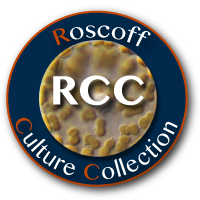Cryopreservation is the maintenance of living biological resources in a metabolically inactive state at ultra-low temperatures (<120°C). Cryopreservation involves controlled rate freezing, usually preceded by treatment with a cryoprotective agent such as dimethylsulphoxide (DMSO), and maintenance (theoretically for an indefinite period of time) at ultra-low temperature either in liquid nitrogen (liquid or vapour phase) or an ultra-low (-150°C) freezer. Successfully cryopreserved biological resources can be reanimated into an active state by rapid thawing.
Cryopreservation has been successfully applied to many cultured microalgae and cyanobacteria and recently to seaweed cultures. Cryopreservation stabilizes genomic integrity, preserves culture quality, minimizes maintenance costs and reduces the risk of catastrophic loss.
The RCC cryopreservation service involves application of our standard protocol to strains sent to us by users, testing of post-thaw viability and (if required) long-term maintenance (usually of 7 replicate tubes). Users will receive a report on the methods used and results of viability tests. Cryopreserved strains can be transferred to the users facilities or maintained in the RCC cryo-facility (in which case the normal ordering procedure will apply to eventual reanimation and sending of strains).
Please contact us if you require more information.






